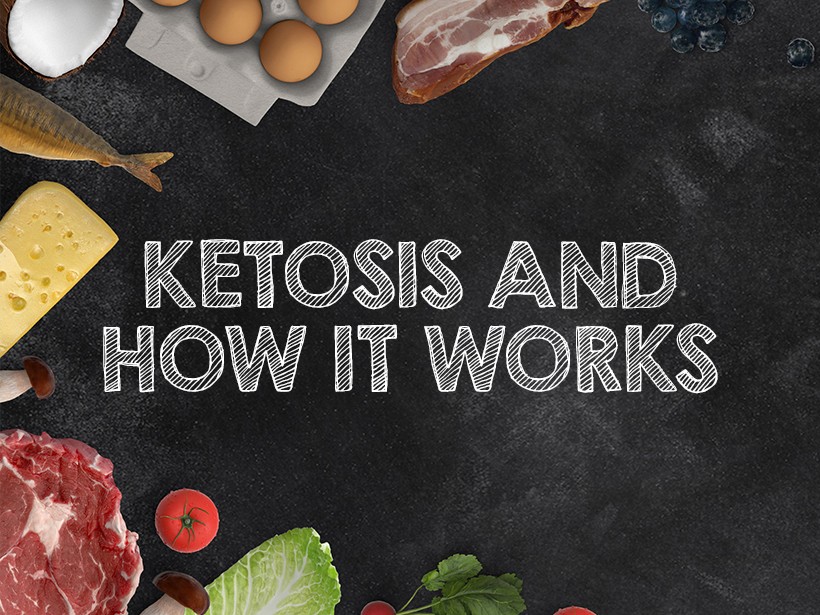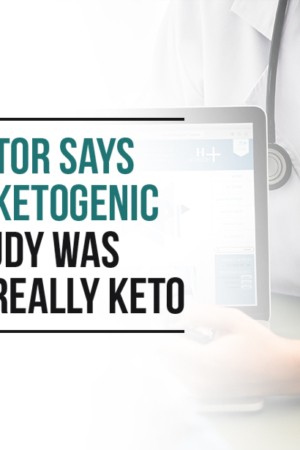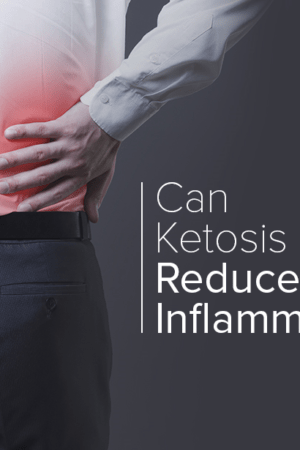Very few people have not heard of low-carb diets in general. What most people don’t know is how low-carb diets actually work or what ketosis really is; there are many diets which are fads or promise some kind of quick fix to a weight loss problem, but upon deeper inspection, their foundation is not only shaky but downright unhealthy. The keto diet is not one of these. In order to understand why, it’s important to understand the biological foundation of the diet, why it works, and how your body handles the physiological reaction to your change in diet.
Gaining Energy
The most common fuel for most modern humans comes in the form of carbohydrates; these are broken down by the body into glucose, a type of sugar that the body can metabolize into energy. When you consume more carbohydrates than the body can use immediately, excess glucose is transformed into glycogen, which is stored in your muscles and the liver. You keep between 400 and 700 grams of glycogen squirreled away for times when you need quick energy1. Once your body has reached maximum storage capacity for glycogen, excess glucose is converted into fat, through a process called de novo lipogenesis, and the body stores this fat for later. The most common source of fat in a modern, Western diet is excess carbohydrates.
It’s normal for your body to run out of carbohydrates, glucose, and glycogen on a regular basis; this simply happens when these readily available, easily accessible sources of energy are exhausted. The body always burns carbs, glucose, and glycogen first; it is the most easily accessible and least long-term energy source. High blood glucose can also be deadly if it isn’t reduced quickly (by a burst of insulin, which is a fat-storing hormone2). After these calories are consumed the body turns to its “batteries,” the stored form of energy: fat.
Perhaps you’ve just completed a long, exhausting workout, or maybe it’s been a long time since you’ve eaten. It’s even possible that you’re doing this intentionally so you can kick start what comes next: ketosis.
Ketosis begins with a simple step: the body begins to break down fat into fatty acids and glycerol in a process called beta-oxidation. The glycerol will be converted into glucose in a process known as gluconeogenesis; although the effect is the same (producing glucose) as consuming carbohydrates, this is an extremely inefficient process and really doesn’t produce much of the sugar, so gaining fuel through glucose production really isn’t the main goal here (we’ll come back to why glucose is produced in a bit).
The main product of beta-oxidation is fatty acids, and this is where ketogenesis really gets going, producing a ketone body called acetoacetate (yes, we know – this is a lot of chemistry; bear with us though, we’re almost there). The final step in this whole chain of chemical reactions we’re describing is when acetoacetate breaks down into two types of ketone bodies:
- Acetone: the body will metabolize this into more glucose (in addition to what it gets from breaking down fat into glycerol, and then into glucose in the process we mentioned above) to some small degree, but for the most part, the body uses this as its main method of excreting waste as the byproduct of burning fat. When you’re first starting on the keto diet and your body isn’t super-efficient at this process, it can produce a lot of this waste; the longer you stay on the diet the more efficient your body becomes, and less of this is produced. The downside of this first part of the process is that acetone can be excreted through the lungs3, which means that a beginning keto dieter can suffer from bad breath until his or her body improves its efficiency.
- Beta-hydroxybutyrate (BHB): Finally, we’ve arrived at the main event – this ketone body is the main goal of ketosis and becomes the primary fuel for your body, and particularly your brain. In fact, this is the food of choice for the brain; it can run an astounding 70% more efficiently on ketones than it can on glucose!4
Maintaining Ketosis
While ketosis is something the body regularly participates in on a very surface level, it isn’t something the modern diet allows with the average carbohydrate consumption of 300 grams per day – this is why ketosis is a relatively inefficient process when you first begin. It takes about 48 hours on a very low-carb diet to deplete your body’s stores of glycogen completely5; at this point, the body begins to take a serious look at using fat as a primary energy source. This is where your body begins to really transition into ketosis.
A typical keto diet consists of 60 to 75 percent fat, 15 to 30 percent protein, and 5 to 10 percent carbohydrates. At first glance, it seems ironic that one of the benefits of consuming fat is burning fat, but the more you think about it the more it makes sense. Your body is becoming accustomed to burning fat as a primary fuel source, so it becomes more and more efficient at it; when you run out of fat that you’ve consumed, the body easily, and naturally, switches over to stored fat. When you’re constantly consuming fat and carbs, however, your body doesn’t have time to switch that metabolic pathway over and never gets super-efficient at burning fat, making it that much more difficult to access and get rid of.
Glucose is still necessary, however; you just don’t need to consume carbohydrates to access it. Your body will use protein for all of its protein-specific needs; after that, however, approximately 56 percent of excess protein will be turned into glucose in your blood stream6. This is why your body is satisfied with 15 to 30 percent protein and more isn’t necessary; in fact, too much protein and your body can be knocked out of ketosis. Wait – haven’t we been essentially saying that carbohydrates are what prevents ketosis? Now we’re saying protein can do it too? Don’t get frustrated; there’s a simple explanation for all of this.
Think about it from an evolutionary, hunter-gatherer perspective. Carbs in nature don’t store well unless they’re preserved in some fashion (think fresh fruit and vegetables), so the body consumed those first; any excess beyond what the body could immediately use, it is stored as fat for long-term purposes. Back in the caveman days, refrigerators and freezers didn’t exist so someone’s primary pantry was the fat their body could store. It wasn’t uncommon to go days without eating anything substantial, which is when the body switched its metabolic pathway over to ketosis. Whenever a kill was made and the caveman gorged on meat, the body knocked itself out of ketosis (“Don’t burn the saved food!”), transformed excess protein into glucose, and any glucose beyond the caveman’s immediate needs was placed into storage – as fat.
With this perspective in mind, other things begin to make even more sense, like why the brain is more efficient while using ketone bodies as fuel than it is with glucose. Back in the day, ketosis was a process that was experienced primarily in-between kills and gorging fests; the longer that someone went without eating, the more efficiently their brain needed to operate in order to ensure the next kill. By the time that a caveman was really ready to eat, his brain was operating at peak capacity off of ketone bodies and enabled him to be that much more efficient in procuring food.
Alright, back to the white-collar caveman of the urban era: the purveyor of the fridge who has unlimited food options. This version of man needs to be selective about what he eats in order to maintain keto, and too much protein can be a bad thing. Follow your macros, however, and you won’t have anything to worry about. You can find out what your macros goals should be using our keto macro calculator.
One quick note about too much protein, since you may see references in other literature about it. When the body metabolizes protein one byproduct is ammonia (yes, the same stuff that’s in household cleaners), which can be bad in excess. The good news is that you can eat plenty of protein without worrying about anything worse than being knocked out of keto; it takes about 230 grams of protein a day before your liver gets overwhelmed and your body starts experiencing negative consequences7. It takes a lot to get to 230 grams of protein, however; that’s about ten burgers a day, and the only real reason to consume that much protein is if you’re seriously trying to pack on muscle. Thankfully, the majority of people can gain muscle with far less of a daily protein intake8.
In fact (and this is good news for your macros as well), you can even consume the majority of your protein in a single sitting (although this isn’t necessarily the best way to do it). In one study9, participants ate 132 grams of protein in a single sitting (that’s about one and one-third pounds of steak) and their blood sugar hardly changed. Again, this makes sense when you go back to the evolutionary perspective we wrote about earlier: in the caveman days, they didn’t schedule three square meals a day after Pop got home from day-trading mammoth tusks and Junior finished his coconut -counting homework. They ate when food was available, and gorging was not uncommon.
One common objection to the keto diet is that glucose is necessary for the body to function at optimal levels, and many assume that the only source of glucose is carbohydrates. This is when we refer back to first, the statistic we quoted a moment ago: excess protein will be converted by the body into glucose, and that generally takes care of all of the body’s needs in that area. If and when protein is absent or deficient to some level, however, that’s when we refer back to the bookmark we placed even earlier. The majority of ketosis occurs in the fat to fatty acids to acetoacetate to BHB chain… but remember those very few, relatively inefficient molecules of glucose produced through the fat to glycerol to glucose chain? That’s where the body gets its glucose needs met in the absence of anything but stored fat.
Isn’t the body amazing?
The end result is this: not only is the keto diet safe, and safe for long-term use, it actually works very well with how the body is naturally designed, and the brain can be up to 70% more efficient while using it. That’s how it works, and if you’re not already on it, you should definitely try the keto diet.
NUTRITIONAL DISCLAIMER
The content on this website should not be taken as medical advice and you should ALWAYS consult with your doctor before starting any diet or exercise program. We provide nutritional data for our recipes as a courtesy to our readers. We use Total Keto Diet app software to calculate the nutrition and we remove fiber and sugar alcohols, like erythritol, from the total carbohydrate count to get to the net carb count, as they do not affect your blood glucose levels. You should independently calculate nutritional information on your own and not rely on our data. The website or content herein is not intended to cure, prevent, diagnose or treat any disease. This website shall not be liable for adverse reactions or any other outcome resulting from the use of recipes or recommendations on the Website or actions you take as a result. Any action you take is strictly at your own risk.
- The Brain’s Role in Weight Loss - March 11, 2019
- Making Fat Loss EPOC - March 8, 2019
- Overcoming Plateaus - March 6, 2019




